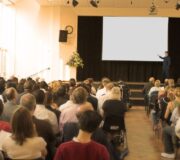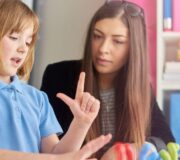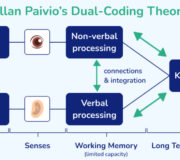Mini Whiteboards: 7 Ways To Use Teachers’ Favourite Classroom Resource
Mini whiteboards are a staple in classrooms across the country, from Key Stage 1 through to GCSE. In this article, we explain how to make the most of this invaluable classroom tool, including how to elevate your use of formative assessment to boost progress amongst your students.
Why use mini whiteboards in the classroom?
Mini whiteboards are more than just an opportunity for children to pick up whiteboard pens and jot down ideas. When used with purpose, they can become an effective tool for formative assessment.
By planning activities in advance, using carefully designed questions to assess learning and by reflecting on pupils’ answers or feedback, it is possible to gain a better understanding of areas where teaching and learning has been successful and where pupils need further input.
Moreover, using drywipe boards can ensure that independent thinking time, partner talk and group discussions are utilised effectively by a higher ratio of pupils. By having a space to express what they know without committing to writing in exercise books, pupils feel more comfortable to take a risk. It also gives the teacher a straightforward way to check pupils are on task and on track.
The Ultimate Guide to Maths Assessments
This guide offers a breakdown of primary and secondary math assessments, with proven strategies and free resources to use in the classroom.
Download Free Now!Advantages of mini whiteboards
- They are erasable – Mini whiteboards are infinitely reusable; a simple swipe of an eraser can wipe whiteboards clean, ready to be used again. This allows pupils to write ideas quickly and removes the fear that many students have of making a mistake or having a ‘messy’ book. This encourages participation of all students.
- They are fun – You can create games, quizzes, group activities and much more using whiteboards, creating endless opportunities for fun in the classroom.
- They are collaborative – Unlike exercise books that belong to specific students, mini whiteboards enable anyone with a dry wipe pen to contribute their ideas in partner and group activities.
- They provide live formative feedback – By using ‘1-2-3 show me’, it takes only a few seconds to analyse pupil progress at a whole class level.
- They identify misconceptions – During guided teacher input, it can be tricky to gauge if pupils have really ‘got it’, especially when approaching new methods in maths. Before moving onto an independent activity, whiteboards can provide a quick opportunity to identify misconceptions.
Disadvantages of mini whiteboards
- They can be a distraction – Desktop whiteboards are an extra desk accessory for pupils in the classroom, and therefore something else to have to resist fiddling with or doodling on.
- Assessment data may not be accurate – It is easy for students to copy each other’s answers so it may not be the most reliable way to check for understanding. However, teachers can reduce this by setting up tasks carefully and creating a safe environment where students feel comfortable making mistakes and understand that making mistakes will help their learning in the long run!
- They require a lot of extra equipment – The humble mini whiteboard is nothing without its accompanying erasers and drywipe marker pens. A class set of equipment for 30 pupils needs a lot of space and extra organisation on your part.
- They take up budget – A classpack of mini whiteboards can range in cost from £23 ex VAT for basic plastic boards to £53.99 ex VAT for more rigid mdf boards. Other bestsellers include magnetic whiteboards for £46.99 ex VAT. Add on the whiteboard erasers, whiteboard markers and extras, such as easels then costs can quickly add up.

Meet Skye, the voice-based AI tutor making maths success possible for every student.
Built by teachers and maths experts, Skye uses the same pedagogy, curriculum and lesson structure as our traditional tutoring.
But, with more flexibility and a lower cost, schools can scale online maths tutoring to support every student who needs it.
Watch Skye in action5 top tips for integrating dry wipe mini whiteboards into lessons
1. Plan, plan, plan
As with most things in teaching, getting the most out of using dry wipe boards in lessons requires thorough planning; it is essential that you have considered why and how you are going to use them. Mini whiteboards can be used at various stages of a lesson for very different purposes.
Towards the end of a lesson, they can be used to evaluate pupils’ learning with a game or quiz where pupils can apply their new knowledge. Whereas towards the start of a lesson, students can reflect on their learning from a previous lesson through a ‘think, pair, share’ or ‘while you wait’ activity.
Alternatively, whiteboards can be used to introduce and explore new concepts.
For example, at the primary level, mini boards can be used in conjunction with cubes or counters to introduce division in Key Stage 1 or to find fractions of an amount in Key Stage 2. Both of these examples require you to consider how you will model this process to the children and what this will look like in practice.
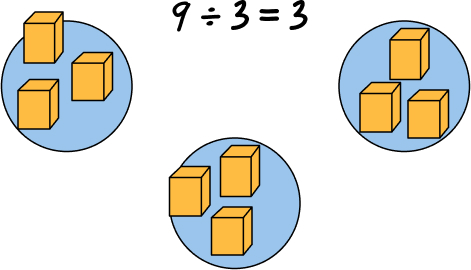
At GCSE, whiteboards can be a great way to encourage students to practise sketching the net of 3D shape to help with calculating the surface area.
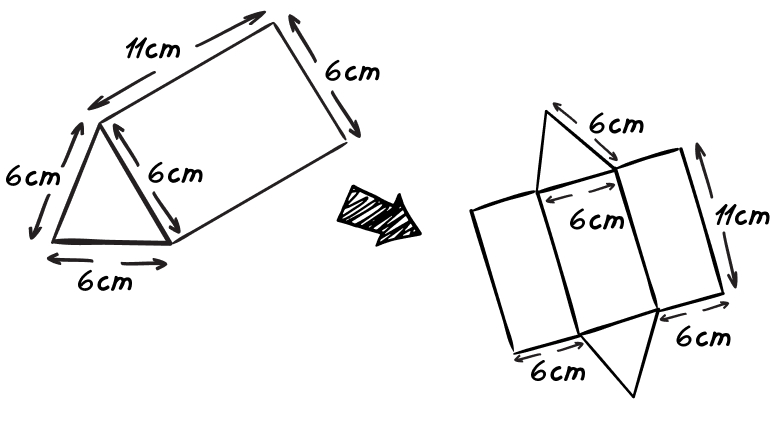
When students first learn to solve a quadratic equation using the formula, a whiteboard can encourage them to have a go without worrying about making a small error and having to rewrite the entire calculation.
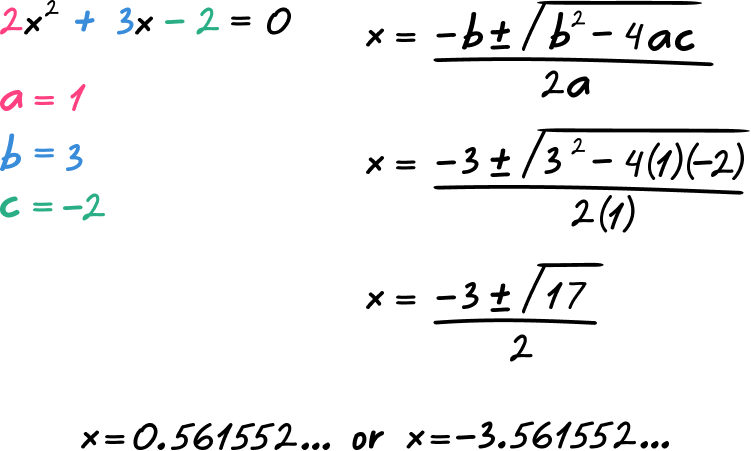
2. Decide what your key questions are
As with all formative assessment and maths diagnostic tests, you need to know what it is that you are assessing and what pupil outcomes you are looking for.
To utilise drywipe boards effectively, it is advisable to decide upon a few key questions that will help you to determine if pupils are ready to move on with their learning or need further support. In maths, it is also advisable that you consider the sequencing of these questions to ensure you are building up through small steps in conceptual understanding.
Design questions that lend themselves to simple answers can be displayed prominently on the mini white board. Don’t be afraid to take a few moments to look up and down the answers to get a good feel of how the class has done.
Consider if you have worded or formatted questions in the best way to collect meaningful data. For example, have you opted for a multiple choice diagnostic question? Are pupils simply required to write the letter of their chosen answer on their whiteboards? You may consider instead using the model of ‘I do, We do, You do’ where pupils will need to show their working on their mini whiteboards.
Once you’ve surveyed your pupils’ answers, identify a few interesting answers and highlight them for class discussion. This could be answers that are particularly good, answers that are correct but could be improved, answers that have not followed the most efficient method, or answers that are incorrect. Mistakes and misconceptions should be celebrated as opportunities to learn.
3. Know your next steps
Even with the best planned, most engaging lessons, children often need more time to become familiar with a new concept or to develop confidence applying a new method independently. When using drywipe boards as an assessment for learning strategy, it is important that you are prepared for any outcome.
The flowchart below recommends different paths you can take depending on the outcome from using whiteboards. This assumes that the majority of students are working independently and not copying each other’s answers, so it’s worth making sure you’ve established expectations for students before you start!
It’s also advisable to, as a first step, ensure your questioning is accurate and clear, before deciding to reteach the whole class and to briskly move onto a new topic without ensuring there’s a solid understanding.
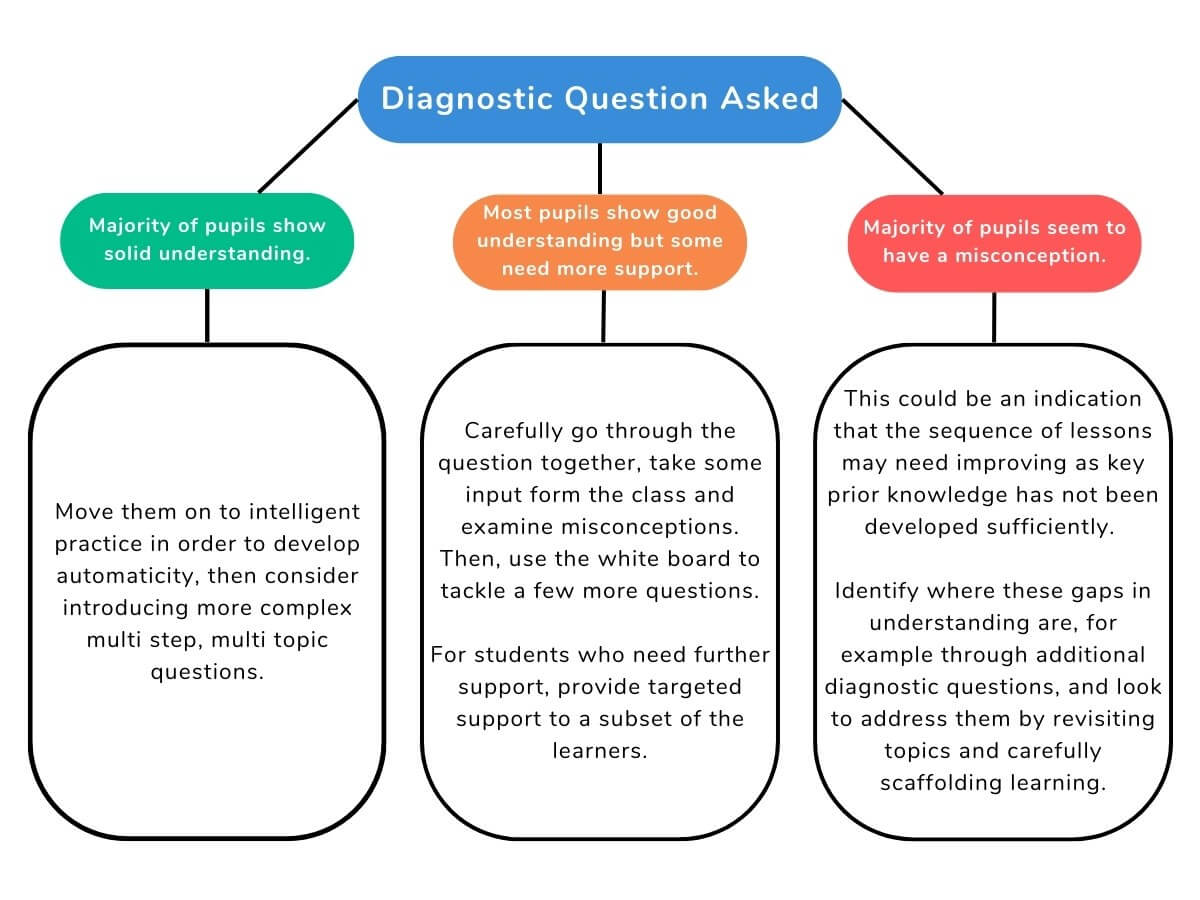
4. Have your resources ready
To fully utilise lesson time, it is useful to have whiteboards and dry wipe pens on desks ready for pupils to pick up and put into action within seconds. There are a number of ways this can be done.
- In Key Stage 1, it may be useful to have resource stations close to the carpet so that pupils have easy access to them during the teacher’s input.
- In Key Stage 2, you may choose to allocate each child a set of resources that they keep with them throughout the day, or you could use table trays to hold resources for groups of children working in close proximity to one another.
- At secondary level, where students move around the school more frequently and class sizes may vary, it may be preferable to lay mini whiteboards out on tables at the start of a lesson and collect them in at the end. Many school planners also incorporate a dry wipe page, so you may find that many of your students already have a mini board to hand.
5. Train students how to use them
Setting expectations for whiteboard use can not only make formative assessment more straightforward, but it can also lead to a calmer classroom environment.
To prevent white boards becoming a source of distraction during teaching, students should know when and where the whiteboard and white board pen should be on the table at various stages during the lesson.
Additionally, pupils should know how and when to share their answers, for example using a 1-2-3 ‘show me’ approach or asking pupils to reveal their answers only once you say a buzzword. This reduces the possibility of children copying from their peers or creating unwanted noise from flapping boards above their heads.
You may also agree upon an appropriate writing size and colour pen choice. This can ensure you are able to see the whole class’ responses from your position at the front of the room, without having to squint your eyes.
7 ideas for mini whiteboards in the classroom
So how could you use mini-whiteboards in your lessons? Below are a few ideas to get you started.
1. ‘While you wait’ activities
To encourage purposeful starts to lessons, ‘while you wait’ retrieval practice questions can help embed prior learning in students’ long-term memory.
In Key Stage 1, this may be a simple set of arithmetic questions to help them settle on the carpet. At Key Stage 2, this can become the follow-on activity after writing the date and learning objective to assess skills learnt in previous units.
As students approach their GCSEs, Third Space Learning’s Fluent in Five can be used as a valuable use of the time at the start of lessons to practise key maths skills. This consists of diagnostic questions which pupils can answer on their whiteboards to assess their understanding of previously covered material.

can be answered on pupil whiteboards to assess understanding of previously covered content.
Alternatively, you may choose to adapt and display more specific revision questions for pupils to answer on whiteboards, such as the fluency or applied questions from the Third Space Learning worksheets.
2. Hinge questions
The term ‘hinge questions’ applies to carefully planned, whole class questions that can be used to check-in on pupils’ understanding and help you to respond to their needs. By incorporating 2 or 3 of these checkpoints into your lessons, you can carefully monitor progress and change tact if required. This can be particularly effective in maths where misconceptions can develop over time. And of course, what better place for students to show their workings out than a reusable drywipe board?
3. Think, pair, share
‘Turn and talk to your partner’ is a common phrase used by teachers from Key Stages 1-5. But how can you be sure that your pupils are making the most of this talk time?
By incorporating drywipe boards into these discussions, you can offer a clearer structure. Giving students time to think independently and jot down ideas before talking to a partner can support even the quietest of pupils to demonstrate their understanding and contribute effectively to partner talk. Erasability also enables pairs to merge their ideas and decide upon their answer or explanation before sharing to a wider group of pupils.
Double-sided whiteboards can be particularly effective here as they offer more space, but can also add some fun e.g. with back-to-back idea generation between partners.
4. I do, we do, you do
Effective modelling is an essential teaching skill, and is particularly pertinent in maths where new content must be broken into manageable chunks to prevent cognitive overload.
When introducing something new, pupils should be given the opportunity to observe an expert (their teacher!) demonstrating the method. From here on, they should be actively involved in their learning, using scaffolds and prompts to guide them towards independent work.
Mini whiteboards come into play at the ‘we do’ stage of teaching. This is where the teacher and pupils work slowly through a problem together, taking one step at a time. Having their own whiteboards allows pupils to replicate what they can see on the main board, whilst adding in their own thoughts and calculations. Care should be taken to ensure that pupils are not just copying down what the teacher has written. By pausing and questioning at key points, we can ensure that this is a valuable use of learning time.
At the ‘you do’ stage, students have the opportunity to answer a question more independently, without having to commit their workings to a less erasable exercise book. This is a useful formative assessment checkpoint before moving on with teaching.
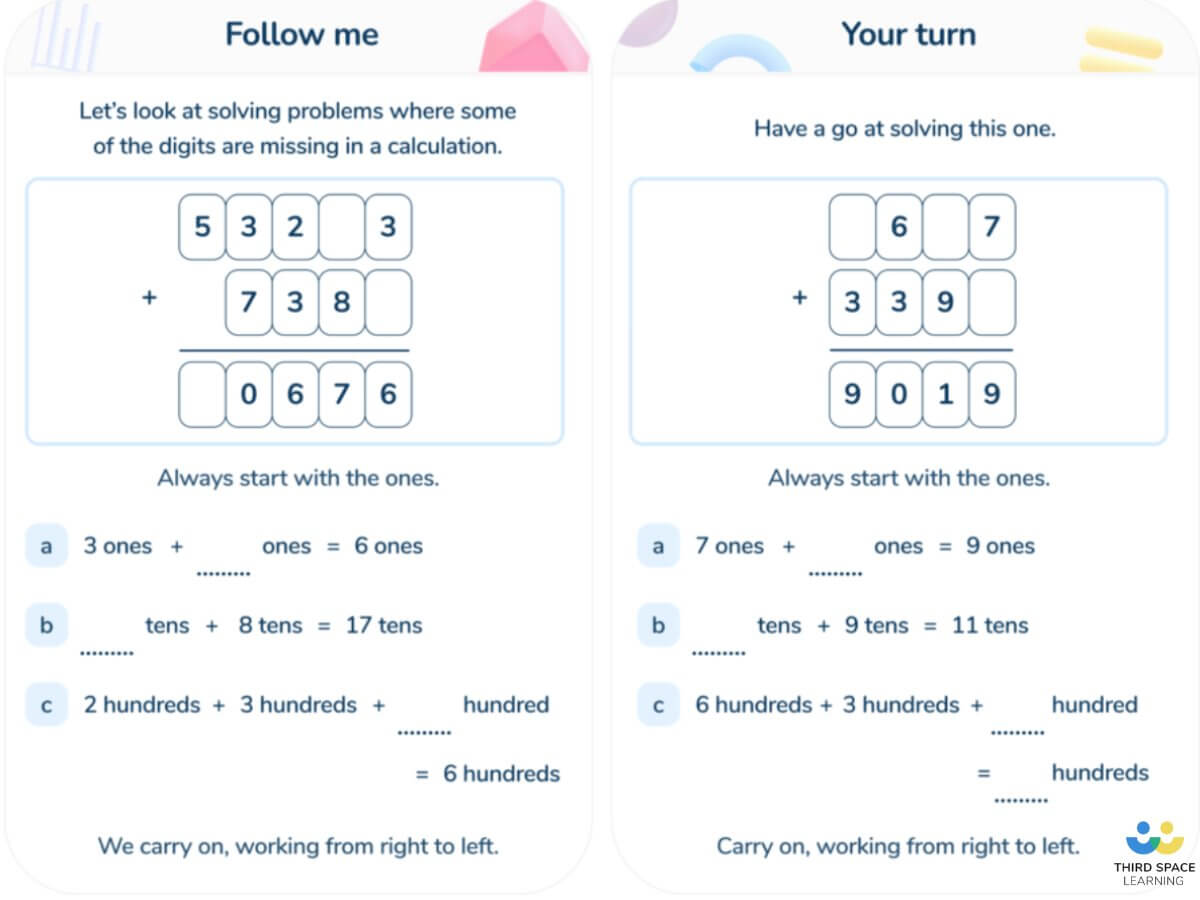
This is the approach we take in our AI tutoring with Skye to identify misconceptions and check for understanding.
5. Worked examples
Drywipe boards are also a useful tool for in-lesson interventions. For example, lower ability pupils and pupils with cognition and learning related special education needs benefit from having a worked example in front of them to refer back to.
This additional scaffold can be produced quickly and easily, either by the teacher or a teaching assistant. In numeracy, gridded whiteboards are particularly useful as they mimic the square paper often seen in maths exercise books.
Below is an example of how to use a gridded mini-whiteboard to model column addition.
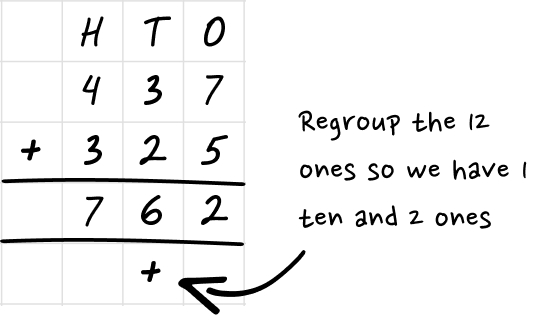
6. Combine and create new concrete resources
Drywipe boards provide a versatile base to use in conjunction with various resources. For example, pupils can draw the outline of a bar model that can be reused throughout a lesson combined with counters, base 10 equipment or multilink cubes. Magnetic whiteboards and counters can be very useful here by helping pupils keep track of their workings.
This can be adapted to suit older pupils working with larger integers, decimal numbers and algebra by using tools like place value counters to represent different amounts rather than counters alone. Below you can see how a mini whiteboard has been used in conjunction with place value counters to calculate the value of 𝑥.
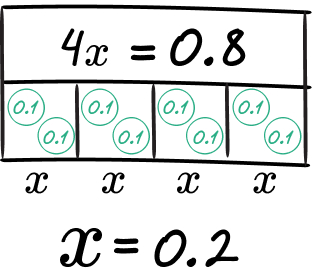
to support pupils in a range of different topics and a range of different stages.
7. Exit tickets
Before ending a lesson, it is important to reflect on whether pupils have grasped the core knowledge and are ready to move on, or if more support is required. Using ‘exit ticket’ style questions to bring a lesson to a close can provide useful assessment for learning.
Exit tickets can be presented in a number of ways: solving calculations, multiple choice, reasoning and problem solving, explanation questions or even a low-stakes quiz combining these approaches. They should always be directly linked to your learning objective.
Mini whiteboards are effective here as they are quick for pupils to use and time effective for assessing from the front of the room. If there are a select few pupils who need further intervention, you can make a quick note of this and incorporate it into future planning.
Conclusion
So there we have it! 7 ways you can use mini whiteboards in your lessons from today. Despite the initial costs and planning, whiteboards are a versatile tool and it’s no surprise that it’s a teacher-favourite classroom resource.
Looking at improving your feedback process? You may be interested in our blog on whole class feedback.
Mini whiteboards can be used in a number of ways in lessons, including assessments such as: ‘while you wait’ activities, hinge questioning and exit tickets. They can also be used in conjunction with other concrete resources to scaffold independent activities.
If whiteboards are not an option, try using scrap paper, placing adhesives such as sticky notes on a class notice board/ memo board or even chalkboards. If you come from a particularly ICT savvy school, a number of apps are available for digital tablets that serve a similar purpose.
Mini whiteboards are an excellent tool for formative assessment i.e. checking understanding before moving onto new content or addressing misconceptions. To make the most of this it is important to plan questions in advance for different stages of the lesson. And remember, it’s not just about using them, it’s about how you adapt your teaching based on the results.
DO YOU HAVE STUDENTS WHO NEED MORE SUPPORT IN MATHS?
Skye – our AI maths tutor built by teachers – gives students personalised one-to-one lessons that address learning gaps and build confidence.
Since 2013 we’ve taught over 2 million hours of maths lessons to more than 170,000 students to help them become fluent, able mathematicians.
Explore our AI maths tutoring or find out about maths tuition for your school.




